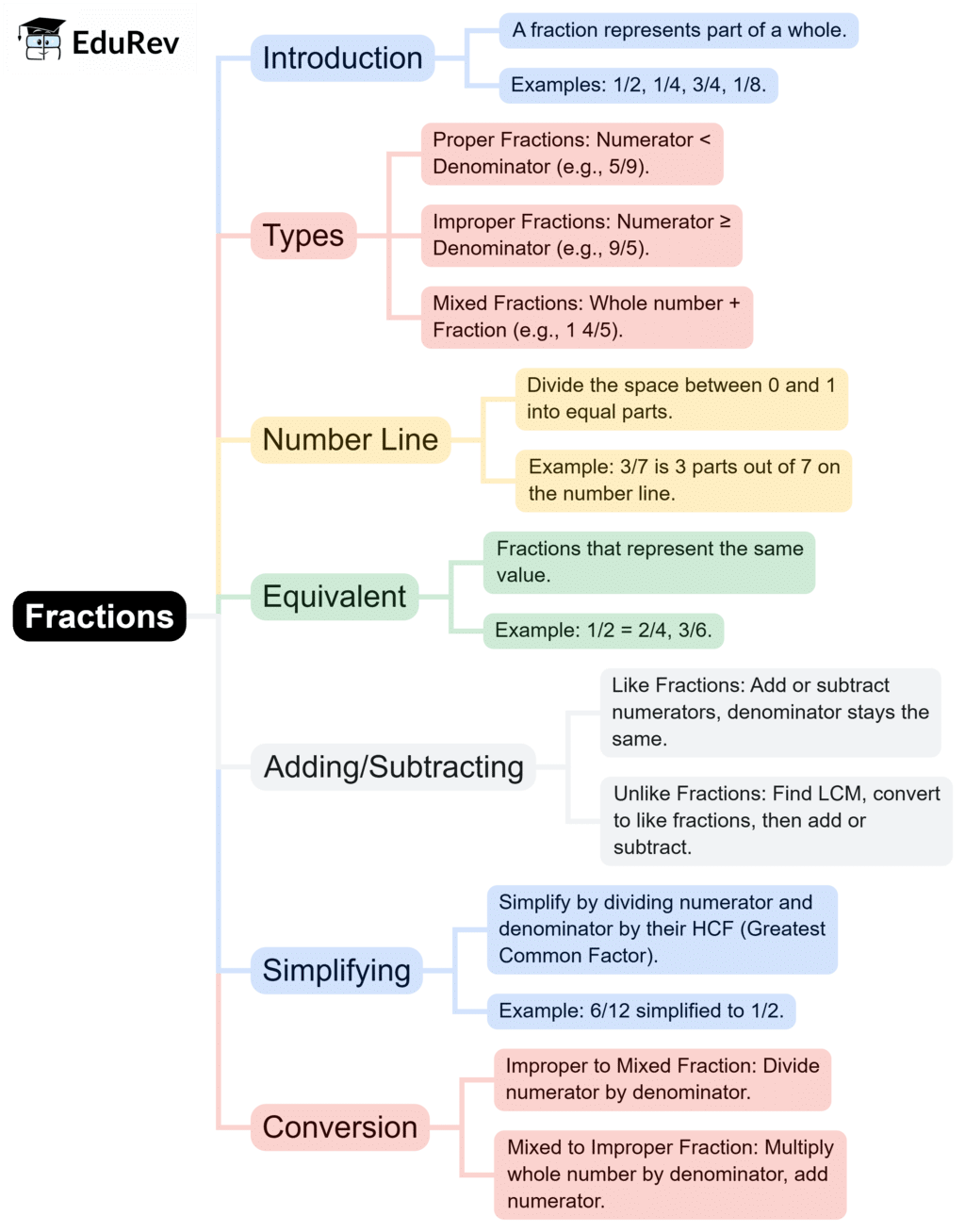Class 6 Exam > Class 6 Notes > Maths Olympiad Class 6 > Mind Map: Fractions
Mind Map: Fractions | Maths Olympiad Class 6 PDF Download

The document Mind Map: Fractions | Maths Olympiad Class 6 is a part of the Class 6 Course Maths Olympiad Class 6.
All you need of Class 6 at this link: Class 6
|
30 videos|120 docs|59 tests
|
FAQs on Mind Map: Fractions - Maths Olympiad Class 6
| 1. What are fractions and how are they represented? |  |
Ans.Fractions are a way to represent parts of a whole. They are written in the form of a numerator (the top number) and a denominator (the bottom number). For example, in the fraction 3/4, 3 is the numerator and 4 is the denominator, which means that we have 3 parts out of a total of 4 equal parts.
| 2. How do you add and subtract fractions with different denominators? |  |
Ans.To add or subtract fractions with different denominators, you first need to find a common denominator. Once you have a common denominator, convert each fraction to an equivalent fraction with that denominator. Then, add or subtract the numerators and keep the denominator the same. Finally, simplify the resulting fraction if possible.
| 3. What is the process for multiplying fractions? |  |
Ans.To multiply fractions, simply multiply the numerators together and multiply the denominators together. For example, to multiply 2/3 by 4/5, you would calculate (2 × 4) / (3 × 5) = 8/15. It’s important to simplify the fraction if possible.
| 4. How do you convert a mixed number into an improper fraction? |  |
Ans.To convert a mixed number (like 2 1/3) into an improper fraction, multiply the whole number by the denominator and add the numerator. Then, place this result over the original denominator. For example, 2 1/3 becomes (2 × 3 + 1)/3 = 7/3.
| 5. What are equivalent fractions and how can you find them? |  |
Ans.Equivalent fractions are fractions that represent the same value even though they have different numerators and denominators. To find equivalent fractions, you can multiply or divide both the numerator and denominator of a fraction by the same non-zero number. For example, 1/2 is equivalent to 2/4 because both can be obtained by multiplying the numerator and denominator by 2.
Related Searches





















